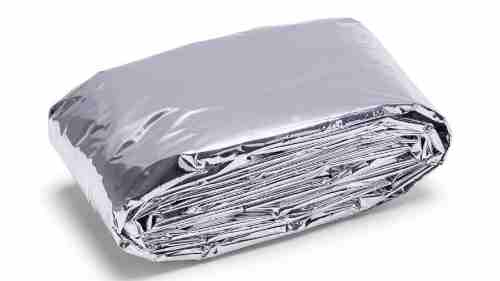The challenge of staying warm during the winter months can be honest. The cold winter temperatures, the high winds, and many snowfalls combine to make you miserable during the winter months. They all work together to cause frigid temperatures, making it hard to fall asleep at night.
But the process of insulating your tent to keep warm in the backcountry of Rocky Mountain National Park or camping in a similar cold area is possible. The key is to be prepared for the weather that you’ll encounter.
How do you stay warm when camping out on a cold winter night? Here are some suggestions to keep dry, warm and comfortable.
Ground Insulation
A rug, ground mat blanket (even big towels if are lacking anything other) could be utilized to protect the tent’s floor. This can make your night’s sleep more restful by helping stop or significantly reduce the cold winter cold that is soaking into your bones.
There are sleeping mats specifically designed for this and can create the buffer between you and cold winter snow. TNH Outdoors has mastered their winter sleeping mats using their self-inflating one-and-half-inch mat.
Build a Wind Break
One benefit of camping in the snow is that you’ll have abundant snow to construct windbreaks with. You can try putting it up in front of your tent, then shovel other snow into the area to make the wall with a small gap of about feet from your tent. This will be a great way of making you feel warm as the wind is one of the primary sources of heat loss in winter.
Even in the absence of snow, There’s no need to stay in a tent without windbreaks. The most common approach is to utilize a natural element, such as the bushes in a group, a fallen tree, or even a mound of rock, to act as a natural windbreak. It is a good idea whenever you are camping; however, it becomes more essential the temperature drops.
Alongside your tent’s rainfly, put up a camping tarp towards the winds blowing to prevent cold air from getting into your tent. So, you’ll relax and enjoy your day amid powerful gusts of wind whirl across your campsite in the evening.
Make sure to cover the tent with an insulated blanket.
Hot air rises while cold air sinks. Therefore, making sure to cover an area on top of the tent with a blanket of insulation, such as thermal blankets, can be an excellent option to keep your body heat from going to the cold winter night.

In colder areas, such as what you could encounter when camping at Glacier National Park in the winter months, you might be surprised to discover that your tent’s insulation capabilities do not keep you warm enough.
Warm Sleeping Bag
A good, thick and warm sleeping bag is a dream when you go on a winter camping excursion. Incorporating insulation to keep warmth in and offer comfort, the most comfortable type that can save you warm, even when temperatures drop below 0 degrees, is the sleeping bag that is mummy.
As it does, It keeps you cosy in warmth thanks to a sculpted drawstring hood that seals the heat inside. Coleman has added additional features such as an insulated foot box and Thermolock tube, which offers retention and warmth in the quilting structure, making it soft and comfortable. He feels like sleeping on clouds regardless of the temperature outside.
For more information and assistance, visit the following websites.
https://zitrotinta.com/how-to-insulate-a-tent-for-winter-camping/
https://gudgear.com/how-to-insulate-a-tent-for-winter-camping/
https://50campfires.com/how-to-insulate-a-tent-for-winter-camping/
https://thegeekycamper.com/insulate-tent-winter-camping-tips/
https://campinghabits.com/insulate-a-tent/
https://couchpotatocamping.com/how-to-insulate-a-tent-for-winter-camping/
https://tenthacker.com/how-to-insulate-a-tent-for-winter-camping
https://outdoorcommand.com/how-to-insulate-a-tent-for-winter-camping/
https://packyourtent.com/how-to-insulate-a-tent-for-winter-camping/
https://decideoutside.com/tent-floor-insulation-guide/
https://projectcamping.com/tents/how-to-insulate-tent-for-winter/